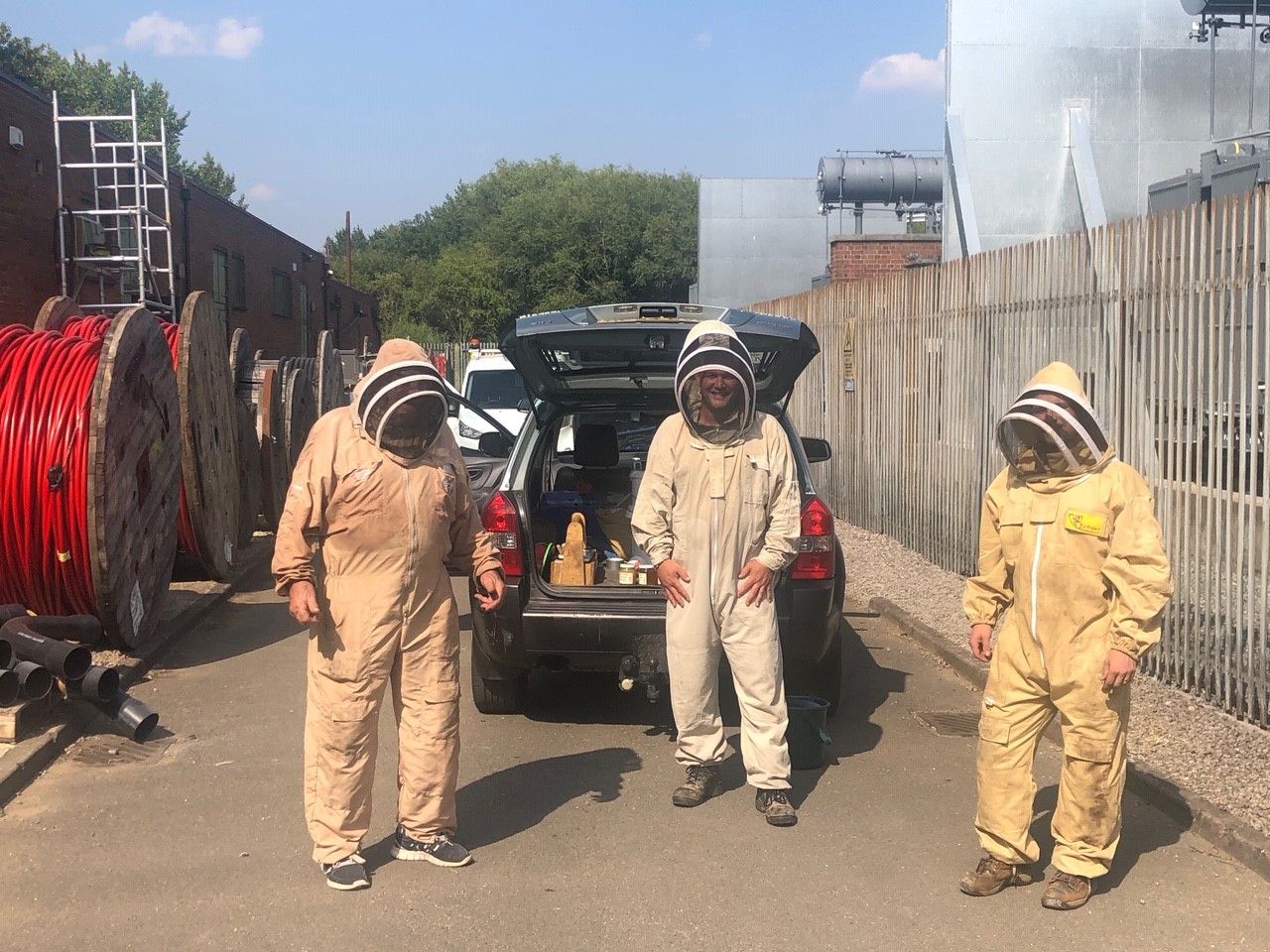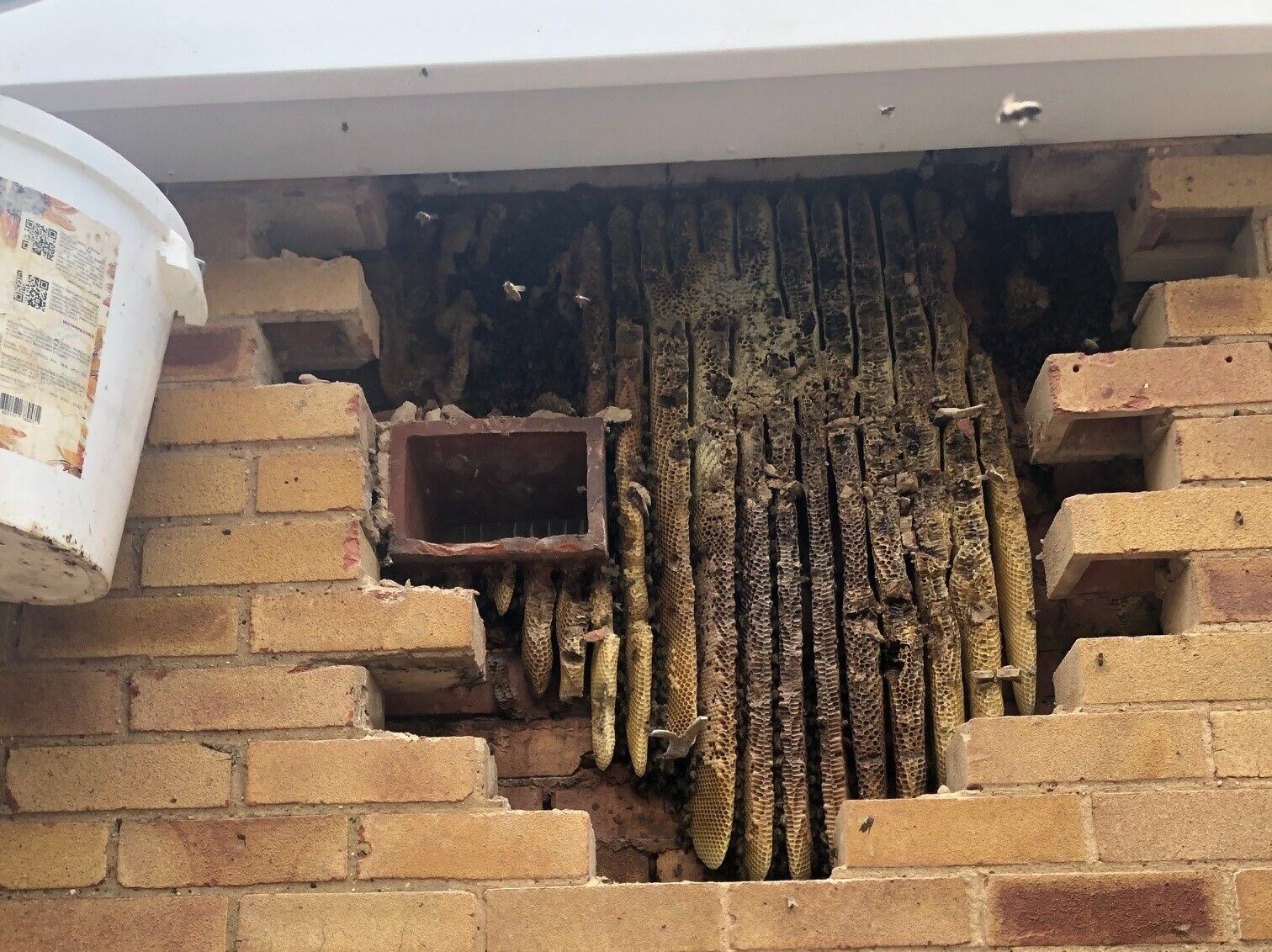Sweet surprise for Midlands substations
A sweet surprise has been found in some of the Midlands substations, which could have been there for the past 25 years.

When work was taking place at Upton Warren 132kv, Bevington 66kv, and Banbury 132kv substations, Chris Steele heard from substation inspectors that bees were making hives in the air bricks.
Chris explained: “I found a couple of local bee keepers (Paul and Ben from the Stourport Honey Company) from the Worcester Bee Keepers Association website, and asked them to come and assess the hives. Honeybees are now classed as a protected species, so you must have them removed properly.

“The hives were quite high up and pretty large, so this meant for a lot of work to remove bricks from the substations. You don’t realise how much bees spread out in the cavity of a building - it’s really impressive to see what they build, especially to think it is in the pitch black.
“To remove the bees, they set up a travel hive which is attached to a hoover. I asked Paul if this would hurt the bees and he assured me that it might be a bit of a thrill but they will be ok. They have to be very careful when extracting the bees because they need to find the queen, which is very difficult to spot. She has a longer abdomen and slightly darker yellow stripes. They have to separate her from the worker bees, because if she is missed more bees will come and the hive will restart. They put her in a bee clip so they don’t lose her once she has been found.
“To get the bees out, they cut the wax at the top and remove all the bees. It’s quite a sticky job because the wax is full of honey, as the bees make it so the queen doesn’t go hungry and stop laying eggs. Once they have fully removed the hive and all the bees, they have to quickly rehome them.
“Paul told me bees can fly up to three miles away from their original hive to try and find a suitable replacement area to live in. They also have robber bees that will find the remains of a hive and take it over for themselves. This is what Paul thinks happened at Bevington primary; he said that by the size and colour of the wax, the bees must have been coming and going from the hive for at least 25 years!”
- About Us
